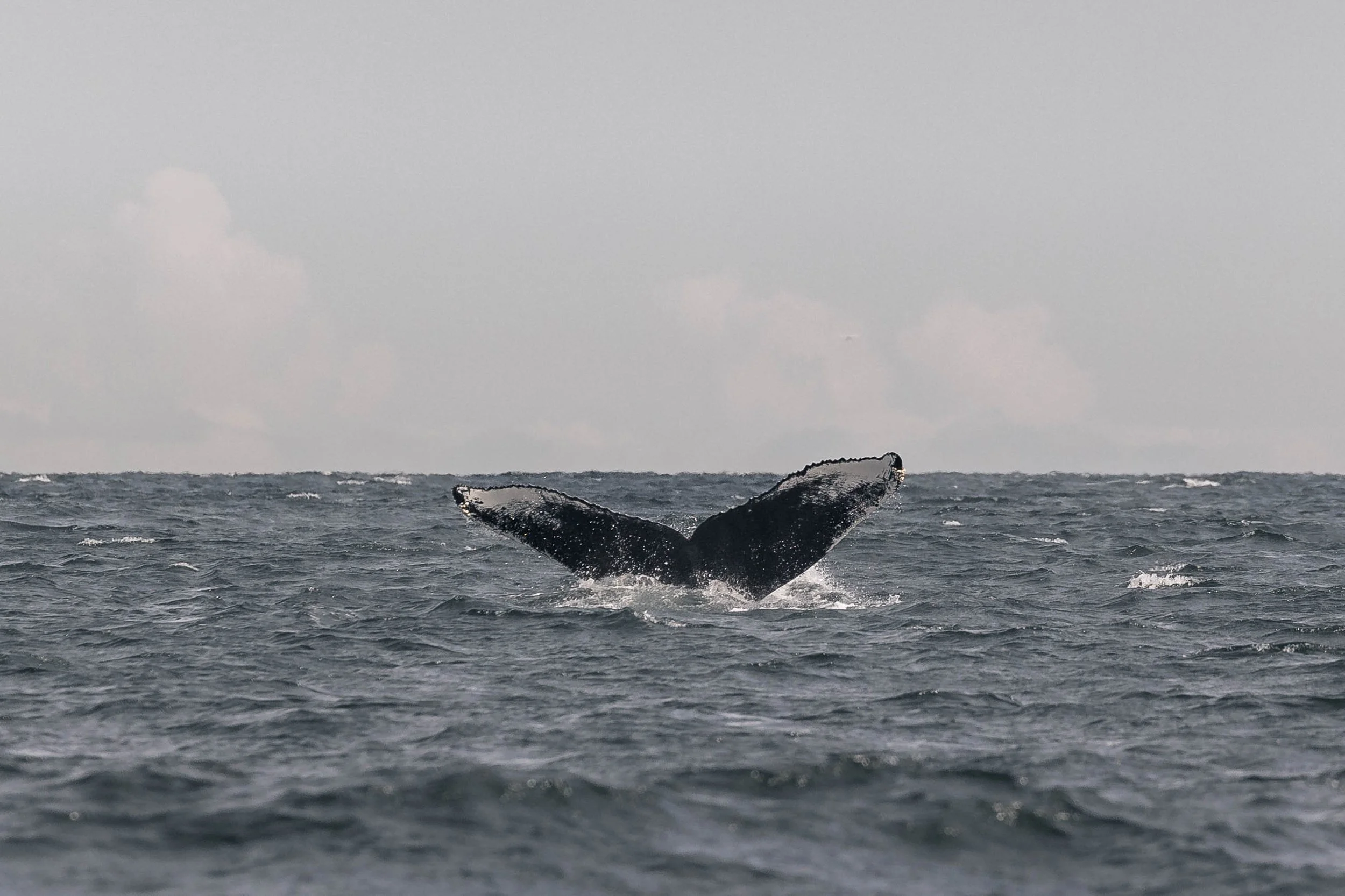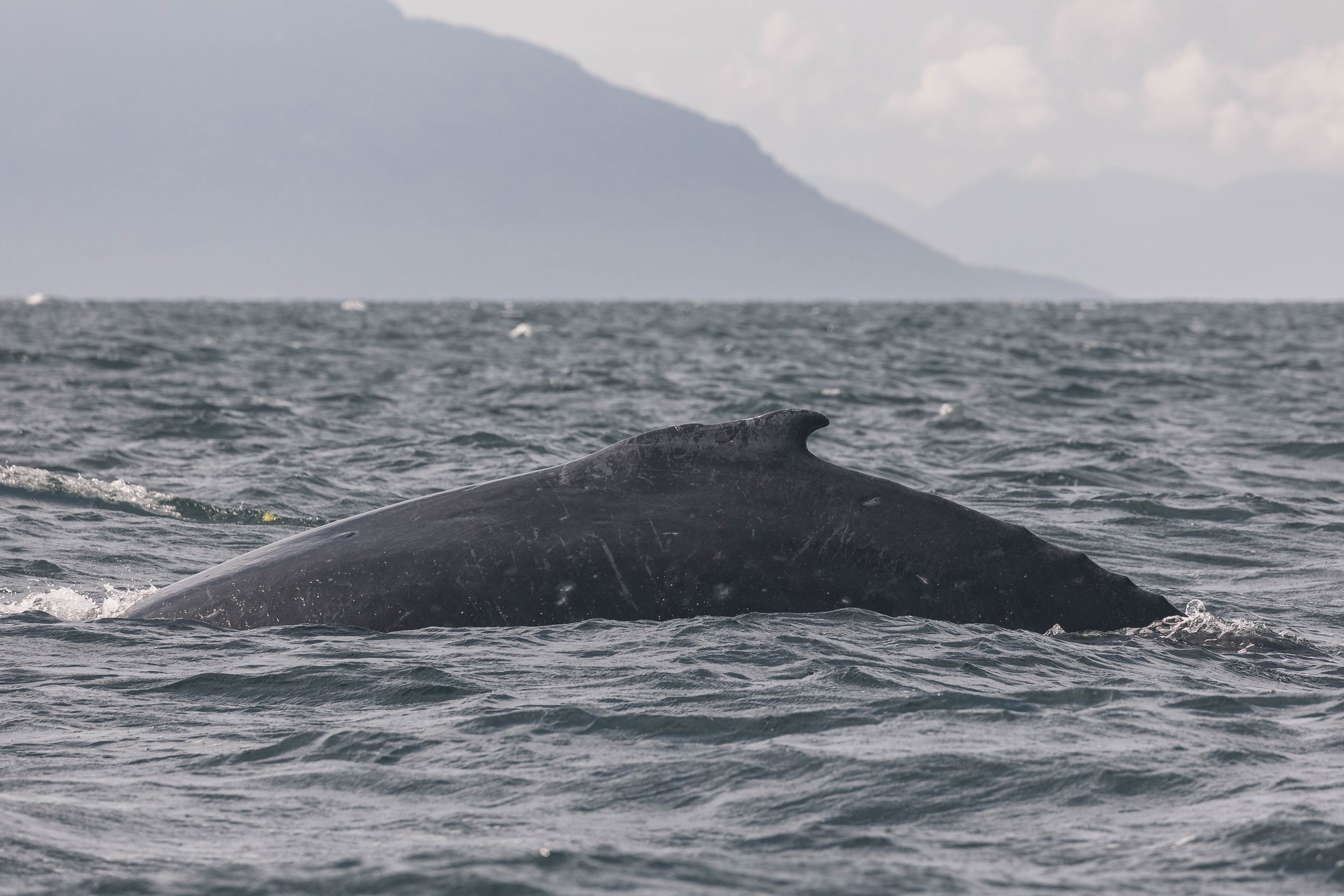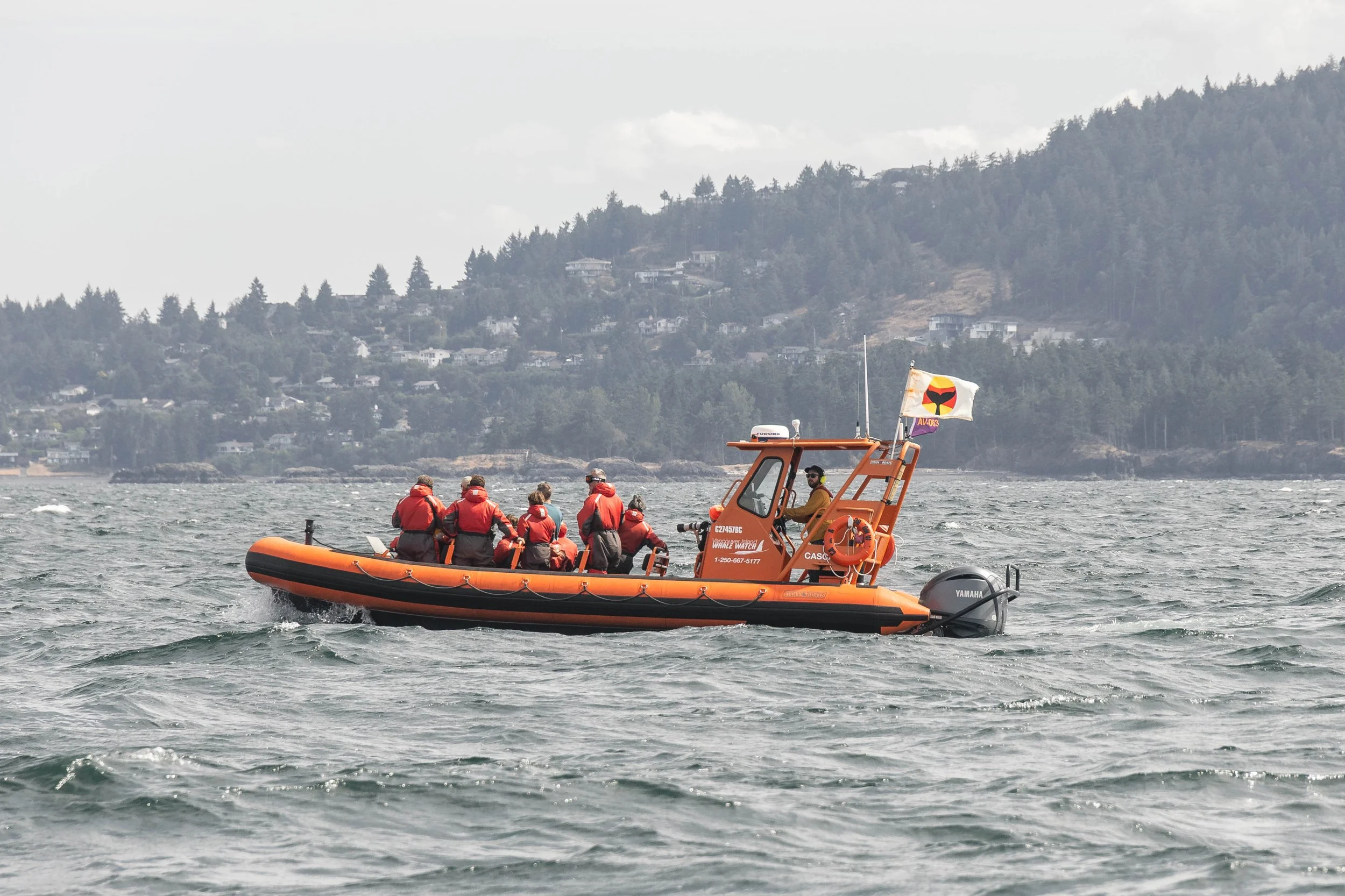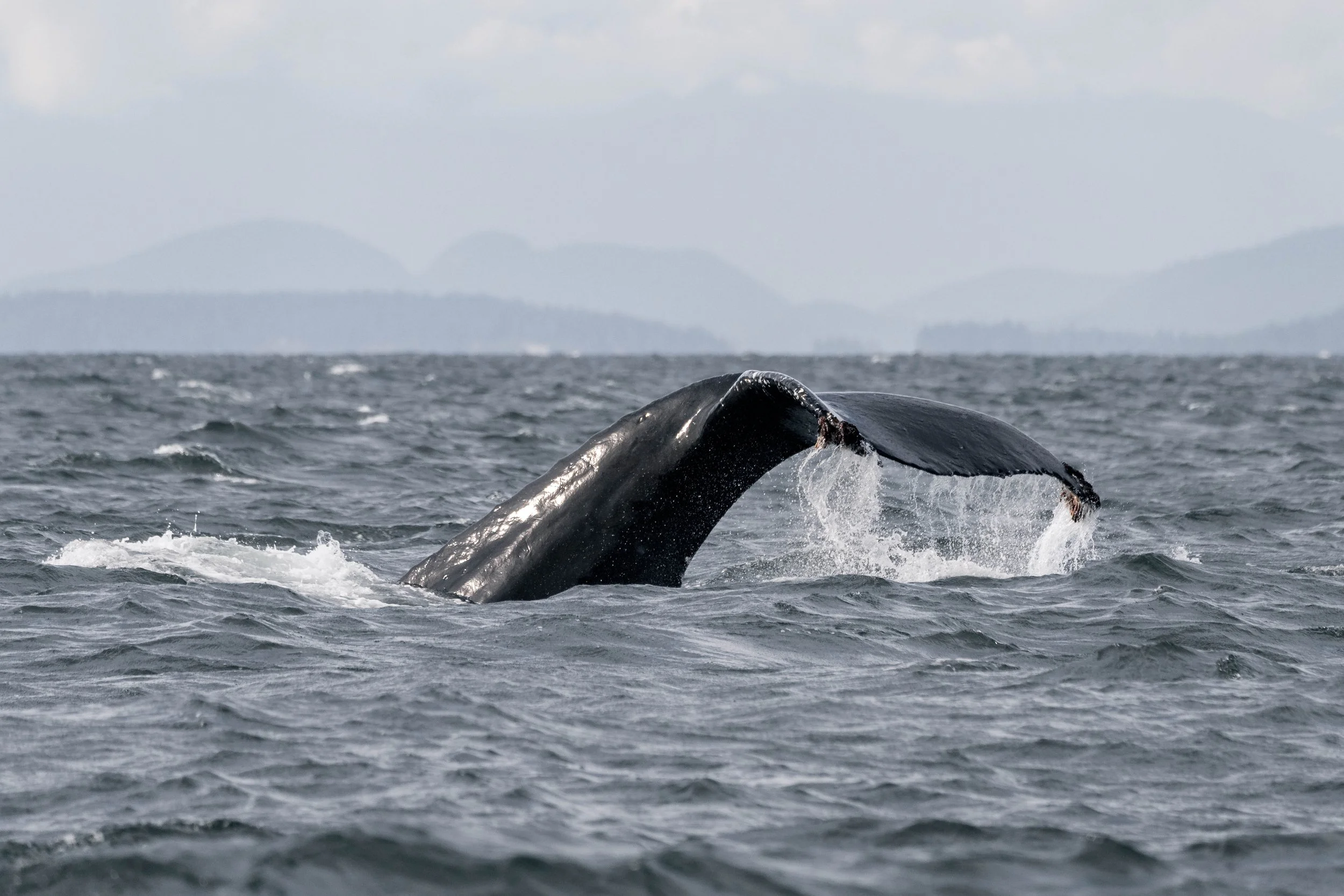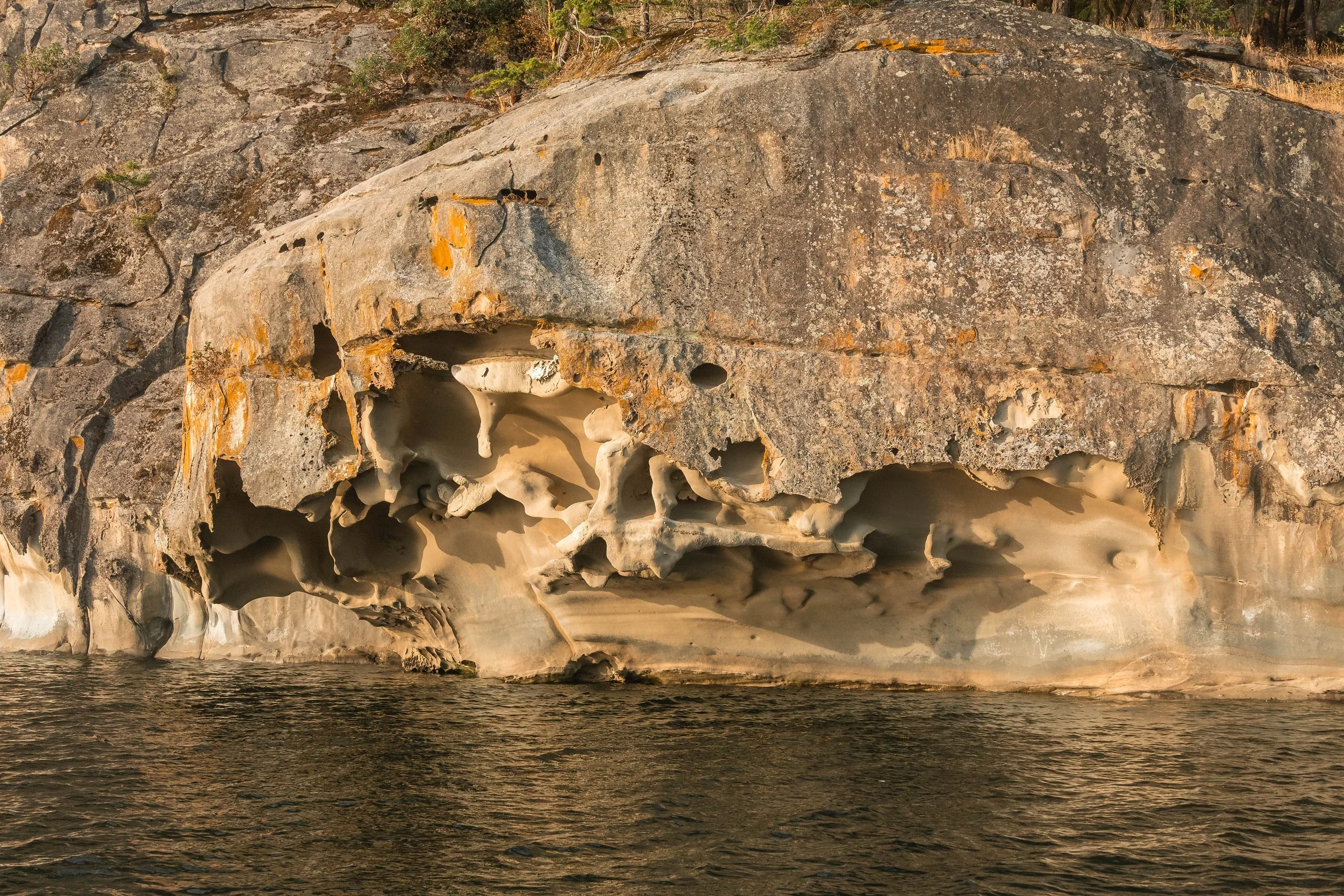July 25, 2025, 3:30 PM - Happy Humpbacks off of Nanaimo
All three of our boats set off this afternoon, heading north into the Strait of Georgia, hoping to reacquire some of the whales that had been seen in the area earlier in the day. It wasn’t long before spotting the blows that we were looking for: a humpback whale in the distance!
Two of our boats identified this whale as Moraine (BCY1465). Moraine was being quite the show off, slapping their pectoral fins on the surface and doing some extravagant backdives and cartwheels.
On their way to join in watching Moraine, our third boat stumbled onto some whales of their own: Holey Moley (BCY1198) playing with Yakima (BCX2182). These two were also being quite active at the surface, seeming to cartwheel and slap their pectoral fins on the surface as if calling back to Moraine.
This is one of the theories as to why humpback whales might be doing these massive displays of strength at the surface of the water: long-distance communication. Anyone on the boats today can tell you how loud these animals were as they slapped their various body parts against the surface of the waves. If it’s this loud above the surface, it would be even louder beneath, since water can transmit sound much faster and further than it travels through the air. Although our different boats could just barely make out the splashing from the other whales, it was likely that they would be able to hear each other and be communicating, although we aren’t exactly sure what they might be saying! It could be a “hey, there is some great food over here”, or maybe “I’m bored, someone come spend time with me!”. We also see this behaviour quite often when the whales are acting more social, so there may be another socially driven reason for it.
It seems that it wasn’t just these three whales that were potentially talking back and forth to each other, but another pair started to show responses in the distance with some pectoral fin slapping of their own. Two boats decided to head over for a quick look at this pair as well, and quickly recognized them as Nike (BCX1337) and Hendrix (BCY1278). It was Nike who was slapping his fins on the surface, with Hendrix seeming to be content just travelling beside his more rowdy friend. Most of the time, the humpbacks in our waters will be prioritizing feeding, with up to 20 hours of their day spent in the pursuit of food, so we felt incredibly lucky to see so much activity and socializing from our whales!
All good things must come to an end, though, so we headed through the inside of the islands to the South, aiming for a popular pinniped haul-out to the east of Valdes Island, and were thrilled to see all of the Harbour Seals and Steller Sea Lions spending their time there. There was even a large male in the mix today, easily distinguishable from the others due to his much larger size and thick, blubbery neck. This large boy may weigh up to 2,500 pounds and should be leaving for his breeding grounds shortly. Once at their rookery, this male will start defending territory, finding himself a group of females with whom he will have the opportunity to breed. During that time, he may go up to 6 weeks without feeding, so the time he can spend here eating and building up more fat is crucial, but if he waits too long, the competition might be too fierce, and he may not have as much luck as some of the other males. No matter, we are enjoying the last bit of time we have with him here before it becomes just the younger males that will be spending their time on our rocky shorelines.
In addition to the Stellers, there were some very cute little Harbour Seals spending their time here, with lots of pups present! July is the main pupping time for the Harbour Seals, with these pups spending around a month with their mom before they start their independent journey. Unlike some other species, the adults and pups look nearly identical, except for their size. This makes sense, since these pups will need the same camouflage as the adults, blending into the seaweed along the shoreline and in the speckled sunlight under the surface.
Finally, the tour ended with a look at the Gabriola Bluffs. This towering sandstone cliff is home to a variety of seabird species, including three species of cormorant, Pigeon Guillemot, and sometimes you’ll also see swallows who nest here. Quite often, you will also get a glimpse of the Bald Eagles who nest nearby, who will use the nesting site as their very own all-you-can-eat buffet. While there wasn’t any meals happening along the cliffs this time, it was great to end the tour with all of this wildlife!
Please enjoy all of the photos below captured throughout the tour by the onboard Marine Naturalists Val Watson, Hayleigh Hilbert, and Jordan Robinson.
Moraine
The underside of Moraine’s tail. Photo by Hayleigh Hilbert.
Moraine starting a cartwheel. Photo by Hayleigh Hilbert.
A lovely sideways tail from Moraine. Photo by Hayleigh Hilbert.
Moraine playing in the waves. Photo by Hayleigh Hilbert.
Moraine’s pectoral fin in the air. Photo by Hayleigh Hilbert.
A lovely cartwheel from Moraine. Photo by Hayleigh Hilbert.
Moraine’s pectoral fin in the air. Photo by Hayleigh Hilbert.
Moraine’s dorsal fin. Photo by Hayleigh Hilbert.
Moraine waving their tails. Photo by Hayleigh Hilbert.
Moraine exhaling. Photo by Jordan Robinson.
Cascadia watching Moraine. Photo by Jordan Robinson.
Holey Moley and Yakima
Yakima going for a dive. Photo by Val Watson.
Holey Moley’s pectoral fin in the air. Photo by Val Watson.
A high fluke from Yakima. Photo by Val Watson.
The underside of Yakima’s tail. Photo by Val Watson.
The underside of Holey Moley’s tail. Photo by Val Watson.
Hendrix and Nike
Hendrix going for a dive. Photo by Val Watson.
All the barnacles on Nike’s tail are holding a lot of water as he dives. Photo by Val Watson.
The underside of Nike’s tail. Photo by Val Watson.
Nike’s Pectoral Fin about to be slapped! by Val Watson.
Other wildlife
A young Harbour Seal and it’s mom. Photo by Val Watson.
A Harbour Seal pup feeding. Photo by Hayleigh Hilbert.
Baby Harbour Seal beside it’s mom. Photo by Hayleigh Hilbert.
The big Steller Sea Lion jumping into the water: Part 1. Photo by Val Watson.
The big Steller Sea Lion jumping into the water: Part 2. Photo by Val Watson.
The big Steller Sea Lion jumping into the water: Part 3. Photo by Val Watson.
Fighting on Stinky Rock. Photo by Val Watson.
The large male crawling back onto the rocks. Photo by Jordan Robinson.
Large Steller Sea Lion on Stinky Rock. Photo by Jordan Robinson.
A Bald Eagle on the log booms by Gabriola Island. Photo by Val Watson.
A Bald Eagle watching us from the treetops. Photo by Val Watson.
A very photogenic Gull. Photo by Val Watson.
Cormorants on the Gabriola Bluffs. Photo by Hayleigh Hilbert.
Sandstone overhang at the Gabriola Bluffs. Photo by Jordan Robinson.

